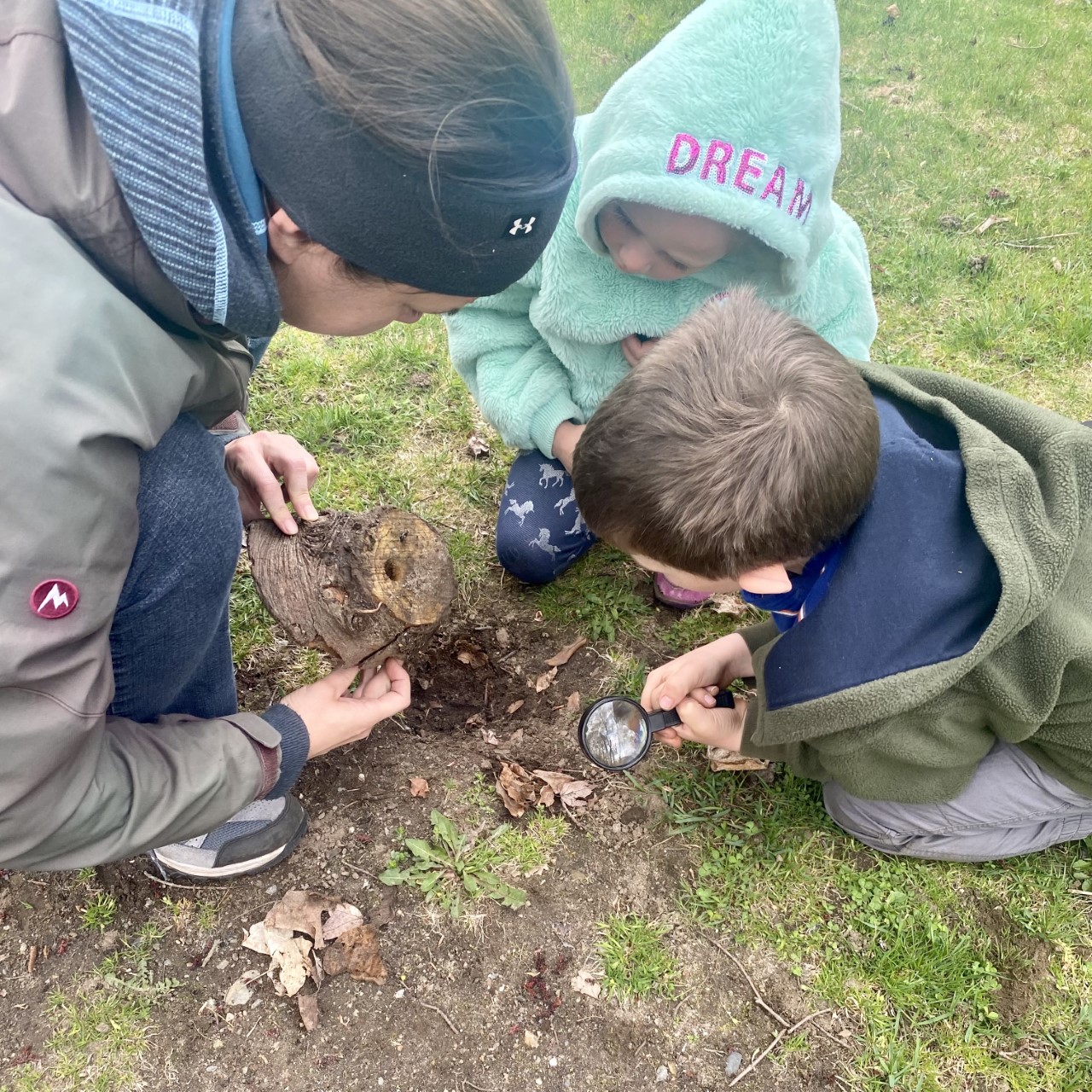Autumn Cutting

Program Coordinator, Autumn Cutting, guides two children in observing a piece of a tree.
Program Coordinator, 2019 – Present
A brother and sister joined us for an outdoor place-based program on a cold spring day. We started off by thinking about what plants and animals do when it’s cold out, one suggestion was that they go underground. I invited them to think about animals that go underground, and I showed them a pile of dirt for them to guess what kind of animal made it. They said ants, beetles and finally worms. They described the pile as rough bumpy lumpy. We moved it to try to find the wormhole, but we couldn’t.
We then went on a group exploration to practice noticing, wondering, and making connections. They found a piece of wood stuck in the ground and pulled it up, exclaiming with excitement that there was a beetle on it. We looked closer at the two bugs and I asked them to tell me what they were seeing, and why they thought that they were beetles. Evan looked at the black, round creature and realized it was a slug, because it was slimy! Katie looked at the other creature and said it looked like a caterpillar because of the stripes. When I asked them about the texture of the bark, Evan said it reminded him of wrinkled clothes which was great because the bark is like a tree’s clothes. Katie said it reminded her of waves, or ridges in the sand. I said it reminded me of a turtle’s skin.
Next, we used hoola-hoops to pick a spot that had a sign of spring and then observe and write or draw about what was inside the hoop. Evan tossed his hula hoop to a random spot on the ground and then drew what was in it: grass and sticks. I encouraged him to look closer and see what else was there. “Oh, there’s a leaf!” he said. I pointed out the little red things and asked if he had any idea what they were or where they came from – were they growing from the ground? He said no and that maybe they had come from the trees. We looked up at the trees and didn’t see anything like it. He went to investigate a Japanese Maple because it had red leaves, but he realized that the leaves were not the same as the things on the ground. Later I explained to everyone about how they were the flowers that had fallen off the trees and now been replaced by leaves. At one point Evan looked down at the grass and saw “an ant pile!” I asked him to describe it and how it was different from the worm pile. He said it was smoother, not rough or bumpy, and neater, with a hole in the middle.
To close out the program, we looked up and said thank you to all the things (including the sky for not raining on us), and looked down and said thank you to all the things. We ended in a chorus of thanks; “Thank you trees, thank you grass, thank you worms, thank you flowers, thank you sticks, thank you ants, thank you birds.”
*The names of participants have been changed and program location withheld to preserve participant privacy.

